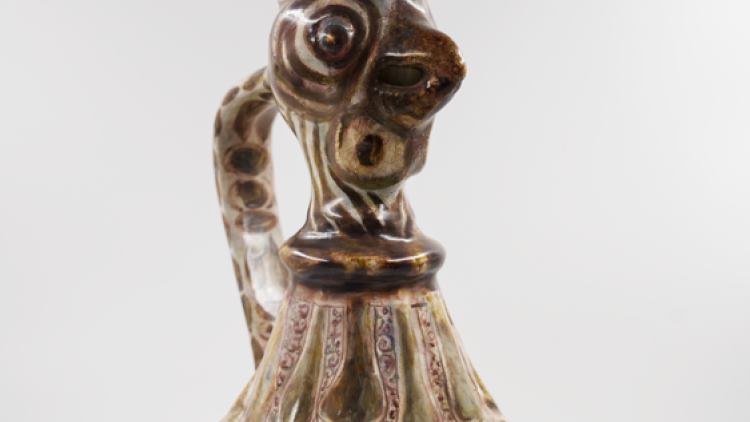Libya

Key information
About this event
Photographs by Rosalind Waddams
17 July - 20 September &
14 October - 30 November 2002
Stretching over 1,000 km from the sandy beaches and rocky coastlines of the Mediterranean to the centre of the vast and inhospitable Sahara, Libya is a country of astonishing beauty and diversity. The citrus and olive groves of the Tripolitanian coastal plain contrast with dramatic desert landscapes and mountain ranges, also with the Murzuq and Awbari sand-dune seas and their palm-fringed oases. Libya is the fourth largest country in Africa, covering an area of almost 2 million square kilometres, over half the size of the whole European Union. Even so, More than 90 % of Libya is desert and although home to over 5 million people, the country's population density is one of the lowest in the world.
Libya as an independent nation was first established by the United Nations only 50 years ago on 24th December 1951, but many thousands of years of cultural history are preserved in the three provinces of Tripolitania, Fezzan and Cyrenaica. The Neolithic rock carvings and paintings of Fezzan depict a time back to at least 12,000 years ago, when the Sahara was still a fertile savannah with perennial lakes, pastureland and herds of grazing buffalo, giraffe and elephants. Dramatic climatic changes around 5,000 years ago then resulted in the vast desert that the Sahara is today. The descendents of the Neolithic hunters and nomadic pastoral tribes - the highly developed Garamantian desert civilisation - evolved to cope with these harsh conditions and established sophisticated irrigation systems and agricultural methods to farm the desert. The Garamantes also controlled the ancient salt, gold and trading routes from the Mediterranean coast to sub-Saharan Africa. Today, the people of the Libyan interior still sustain their traditions of trade, farming and pastoralism.
The influence of Islam and the legacy of African and Mediterranean cultures - the Greeks, the Romans, the Garamantes, the Ottomans - are all evident in Libya. Among the finest archaeological and architectural sites around the Mediterranean are the Roman cities of Leptis Magna (Lebda) and Sabratha, the Berber qasrs (fortified granaries) of Jabal Nefusah and the mosques and peaceful courtyards of the Tripoli Medina.
This exhibition aims to present the beauty and diversity of this significant, but still too little known, country and its peoples, displayed by three main themes. Traditional crafts and images from the souks can be seen in the Gallery Café. Scenes from Tripoli (Trabulus), Jabal Nefusah, the Mediterranean coast and the Roman cities of Leptis Magna (Lebda) and Sabratha are shown in the area leading to the upper gallery. There, photographs of Fezzan and the southwestern interior- including the Awbari Sand Sea, the Akakus mountains, Neolithic rock carvings and the Tuaregs and their camels- are shown.
Rosalind Waddams, a petroleum geologist, returned to Libya in 1999, the country where her father had lived and worked during the late 1960s and early 1970s as economic advisor to the government. Rosalind became fascinated by Libya during her recent 15-month stay and hopes that her photographs convey both the drama of the landscapes and the warmth, vitality and hospitality of the Libyan people.
This exhibition has been made possible by generous support from The Centre for Libyan Studies, Oxford, publishers of The Journal of Libyan Studies, Mr. Youssef El-Megreisi and Andante Travels
